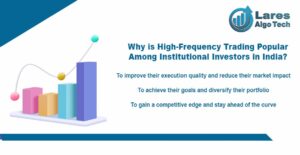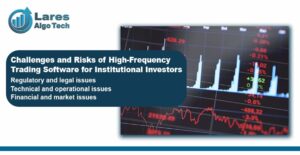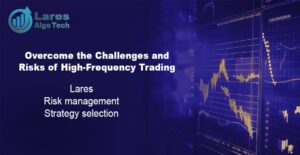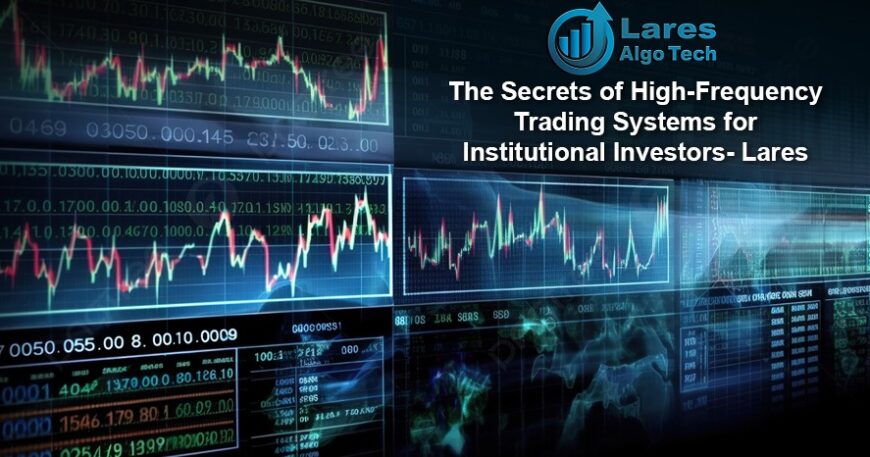High-frequency trading (HFT) is a type of algorithmic trading that uses advanced technology to execute large numbers of orders in a fraction of a second. HFT is becoming increasingly popular among institutional investors in India. It aims to take advantage of the market inefficiencies and opportunities created by the rapid changes in prices and volumes.
In this blog, we’ll uncover the secrets of High-Frequency Trading Software for Institutional Investors and explain how they can benefit from this innovative and lucrative trading strategy. We’ll also discuss the challenges and risks involved in HFT and how to overcome them with the right tools and techniques.
What is High-Frequency Trading and How Does it Work?
High-frequency trading relies on complex mathematical models and powerful computers to analyze and execute orders in the financial markets. HFT traders use various strategies to exploit market anomalies, such as arbitrage, market making, momentum, and statistical arbitrage.
HFT traders aim to capture small profits from each trade and multiply them by the large number of trades they execute in a day. They often hold their positions for very short durations, ranging from milliseconds to seconds, and rarely carry overnight risk. HFT traders contribute to a significant portion of the trading volume and liquidity in the markets. You can read the blog on “What makes HFT trading software company so important?“
Why is High-Frequency Trading Popular Among Institutional Investors in India?
High-frequency trading has become increasingly popular in India, especially after the introduction of direct market access (DMA) by the Securities and Exchange Board of India (SEBI) in 2008. DMA allows institutional investors to access the exchange trading system directly, without any intervention from the brokers. This reduces transaction costs and delays and enhances the control and transparency of the trading process.
Use of High-Frequency Trading Software for Institutional Investors with various reasons, such as:

- To improve their execution quality and reduce their market impact: By using HFT systems, institutional investors can break down their large orders into smaller ones and execute them at the best available prices without affecting the market movements. They can also use High-Frequency Trading software to monitor the market conditions and adjust their trading strategies accordingly.
- To achieve their goals and diversify their portfolio: Using High-Frequency Trading software for institutional investors can exploit the market inefficiencies and opportunities that arise due to price and volume fluctuations. They can also use HFT systems to implement various trading strategies, such as arbitrage, market making, momentum, and statistical arbitrage, that can generate consistent and risk-adjusted returns.
- To gain a competitive edge and stay ahead of the curve: By using the HFT system, institutional investors can leverage the latest technology and innovation in the trading domain. They can use High-Frequency Trading software to access real-time market data and information and process them faster and more accurately than their competitors. They can also use HFT systems to test and optimize their trading algorithms and models and improve their performance and efficiency.
Challenges and Risks of High-Frequency Trading Software for Institutional Investors
High-frequency trading is not without the challenges and risks of High-Frequency Trading Software for Institutional Investors. Some of the major ones are:

- Regulatory and legal issues: High-frequency trading is subject to various rules and regulations by the SEBI and other authorities. Institutional investors need to comply with these rules and regulations and ensure that their HFT systems are transparent and accountable. They also need to be aware of the legal implications and liabilities of their HFT activities, such as the der trading, the front-running, and the market manipulation.
- Technical and operational issues: High-frequency trading requires a high level of technical and operational expertise and infrastructure, such as the hardware, the software, the network, the data, and the security. Institutional investors need to invest heavily in these aspects and maintain them regularly and efficiently. They also need to cope with technical and operational challenges and risks, such as system failures, glitches, bugs, latency, slippage, hacking, and cyberattacks.
- Financial and market issues: High-frequency trading involves a high level of financial and market risk and uncertainty, such as volatility, liquidity, competition, arbitrage, and market shocks.
How to Overcome the Challenges and Risks of High-Frequency Trading?
High-Frequency Trading Systems for Institutional Investors can be a rewarding trading strategy if they can overcome the challenges and risks involved in it. To do so, they need to use the right tools and techniques, such as:

- Lares: Lares is a leading provider of high-frequency trading software and solutions for institutional investors in India. Lares offers a comprehensive and customized HFT platform, that includes the hardware, the software, the network, the data, and the security. Lares also offers a range of HFT services, such as co-location, smart order routing, algorithm development, backtesting, optimization, execution, and reporting. Lares helps institutional investors to achieve their HFT goals and objectives, by providing them with the best-in-class HFT technology and support.
- Risk management: Risk management is a crucial aspect of high-frequency trading, as it helps institutional investors minimize their losses. Risk management involves various techniques, such as risk analysis, risk measurement, risk control, and risk mitigation. Risk management helps institutional investors identify, quantify, monitor, and manage their HFT risks and exposures.
- Strategy selection: Strategy selection is a vital aspect of high-frequency trading, as it helps institutional investors choose the most suitable HFT strategy for their trading objectives and preferences. Strategy selection involves various factors, such as market conditions, trading frequency, trading duration, trading volume, trading costs, and trading returns. Strategy selection helps institutional investors select the optimal HFT strategy, such as the arbitrage, the market making, the momentum, or the statistical arbitrage.
Conclusion
High-Frequency Trading Software for Institutional Investors is a form of algorithmic trading that uses sophisticated technology to execute large numbers of orders in fractions of a second. HFT has been gaining popularity among institutional investors in India. They seek to take advantage of the market inefficiencies and opportunities created by the rapid changes in prices and volumes.
However, HFT also involves various challenges and risks, such as regulatory and legal issues, technical and operational issues, and financial and market issues. To overcome these challenges and risks, institutional investors need to use the right tools and techniques, such as Lares, risk management, and strategy selection.
By using these tools and techniques, institutional investors can benefit from HFT, improve their execution quality, diversify their portfolio, and gain a competitive edge in the market.





